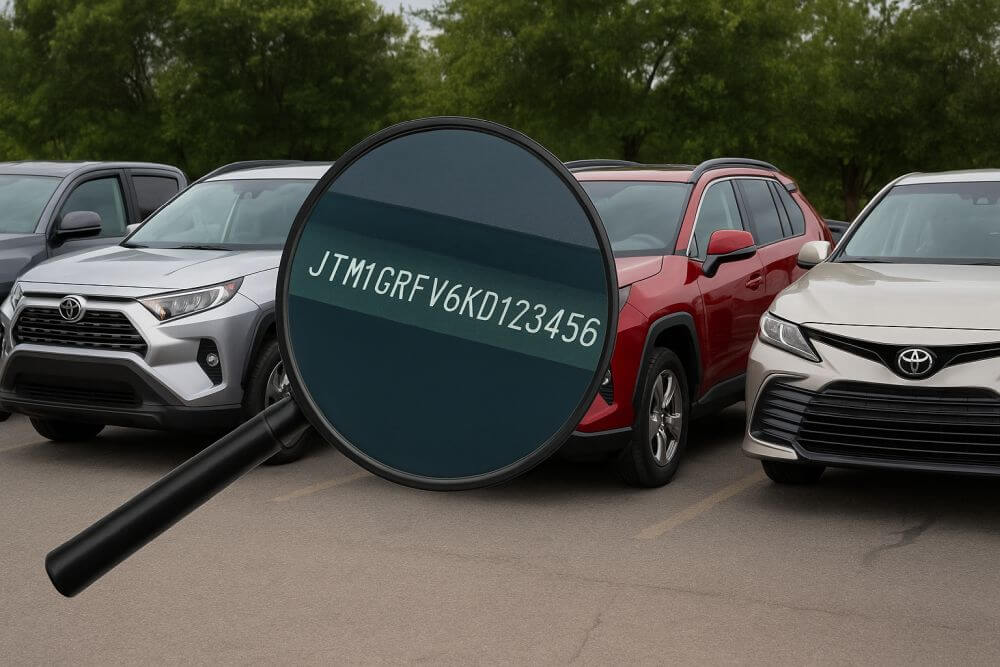Selling your car isn’t just about finding a buyer—it’s about maximizing what your vehicle is truly worth. Whether you’re planning to upgrade to a newer model or simply cashing in on your current ride, increasing your car’s resale value starts with understanding what buyers look for—and how to present your vehicle in its best condition.

One of the most powerful tools in this process is a VIN check, which provides transparency around your vehicle’s history and specifications. Pair that with smart cosmetic and mechanical improvements, and you can confidently ask for top dollar.
Let’s break down the exact steps you can take to increase your car’s resale value—starting with getting a baseline estimate.
Step 1: Get a Realistic Car Value Estimate
Before investing time or money into upgrades, you need to understand your car’s current market value. This gives you a baseline to assess whether improvements will bring ROI.
Use a Car Value Estimator or run a free VIN check to access pricing benchmarks based on your car’s make, model, year, mileage, and condition. Once you know what your car is worth “as-is,” you can take targeted steps to increase its appeal and command a higher price.
Step 2: Maintain and Document Regular Maintenance
A vehicle that has been well taken care of speaks volumes to buyers. Routine maintenance not only improves performance and safety—it increases resale value.
- Keep thorough service records: Include oil changes, tire rotations, brake replacements, and major repairs.
- Complete outstanding repairs: Fix any mechanical issues that could raise red flags during a buyer’s test drive.
- Pre-sale inspection: Consider getting a pre-listing inspection to address issues before a buyer points them out.
A documented history of care builds confidence and justifies a higher asking price.
Step 3: Boost Your Car’s Visual Appeal
First impressions matter—and nothing turns off a buyer faster than a dirty or neglected vehicle. The good news? Simple detailing work can pay off big.
- Professional detailing: A deep clean inside and out can make your car feel nearly new.
- Paint correction: Buff out scratches and chips; consider touch-up paint or ceramic coating if necessary.
- Replace worn items: Floor mats, headlights, and wiper blades are inexpensive upgrades with visual impact.
Consider these cost-effective cosmetic enhancements as an investment, not an expense.
Step 4: Provide a Vehicle History Report
Today’s car buyers expect transparency. Offering a full vehicle history report proactively is a trust-building move that may shorten your time on the market.
- Use a VIN decoder to pull data like accident history, title status, odometer records, and more.
- Highlight the positives: A clean title, no accidents, and consistent maintenance boost perceived value.
- Fix what’s fixable: If your report flags issues that can be addressed (e.g., an open recall), do so before listing.
👉 Check your car’s history by VIN to generate a full report.
Step 5: Leverage the Power of VIN Decoding
Your car’s Vehicle Identification Number (VIN) contains a goldmine of data—much of which buyers will want to see.
Using a free VIN decoder, you can extract:
- Engine type and specs
- Transmission details
- Trim level and factory-installed features
- Country and plant of manufacture
Providing this information in your listing helps buyers verify key features—and ensures your description is accurate.
👉 Try the Nissan Recall VIN Lookup if you’re selling a Nissan vehicle and want to highlight recall compliance.
Step 6: Set a Smart, Competitive Price
With your car cleaned, prepped, and documented, it’s time to set a fair asking price.
- Do your research: Check prices on local listings, Kelley Blue Book, Edmunds, and vehicle marketplaces.
- Factor in your upgrades: If you’ve spent money improving your vehicle, price it accordingly—but don’t overprice.
- Leave wiggle room: Expect buyers to negotiate, so build in a reasonable buffer.
A competitive price attracts more inquiries and can drive quicker sales—especially when your car stands out with its condition and verified history.
Final Tips Before Listing Your Car
- Take great photos: Highlight both exterior and interior. Clean, well-lit images make a big difference.
- Write a clear description: List your car’s features, condition, and upgrades. Don’t forget to include your VIN for buyers who want to run their own checks.
- Be responsive: Answer inquiries promptly and have documents ready—like your title, maintenance records, and VIN report.
Summary: Quick Checklist to Boost Resale Value
| Step | Action |
|---|---|
| 1. | Check current car value using VIN |
| 2. | Perform maintenance and gather service records |
| 3. | Detail and enhance visual appeal |
| 4. | Pull and share your vehicle history report |
| 5. | Decode VIN for feature transparency |
| 6. | Price competitively using market data |
Frequently Asked Questions
How do I check my car’s value by VIN?
Use a free [VIN-based car value tool](https://www.vincheckpro.com/car-value-by-vin/) to instantly estimate your car’s resale range based on trim, condition, and market trends.
Should I repair or sell “as is”?
If the repairs are affordable and improve reliability or safety, it’s usually worth fixing them to increase resale value and buyer trust.
What do buyers look for in used car listings?
Clean titles, no accidents, service history, low mileage, and transparent VIN-based info are top buyer priorities.
Does providing a vehicle history report really help?
Yes. Buyers are more likely to pay full asking price when they trust the condition and background of the vehicle.
Maximize Your Car’s Value Now
Before you post that ad or meet your first buyer, make sure your car is ready to impress. Start by running a free VIN check on VinCheckPro to uncover hidden value, verify key specs, and generate your vehicle history report.
👉 Use the Free VIN Decoder Tool Today
Whether you’re trading in or selling privately, your car’s value is in the details—and we help you show them off.

